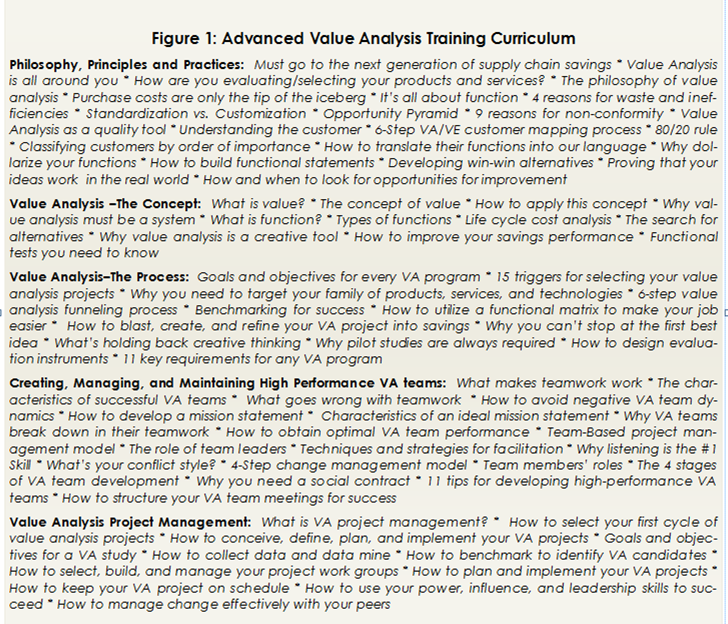By Robert W. Yokl, Sr. VP, Operations — SVAH Solutions
Let’s face it, we live in a GPO-centric healthcare supply chain world and that isn’t going to change much in the near to distant future. I am not stating anything that is not obvious to anyone reading this article, but this now creates new mission critical challenges for supply chain professionals that need to be addressed. The biggest challenge is validating the financial ROI from group purchasing organizations (GPOs) and all other contracted savings opportunities, thanks to the Covid-19 pandemic as well as other market conditions.
Even GPOs Can’t Tell You Exactly How Much You Saved Overall
Yes, supply chain leaders can easily say that they implemented the new GPO contract conversion, value analysis initiative, physician preference contract, or standardization opportunity because their teams made the changes and they are in place on their purchasing/ERP systems. This still leaves an avenue in which even the GPO organizations cannot tell you with certainty whether all the projected monies hit the bottom line and exactly how much hit or did not hit.
Challenging the Status Quo to Find an Additional 26% to 53% Savings
The standard operating procedure for savings tracking to date is to use the base number that you started with when you signed the contract. This normally was derived from your supply usage from the previous 6-12 months and then projecting your savings based on the new pricing. The big question is, is this still a realistic business strategy to leave an avenue that greatly affects your bottom line for the next one, two, or three years? Basically, you are using an estimate to report your savings. Is this good enough in these challenging times? Now that you are on the hook for millions of dollars in savings and most Chief Financial Officers are looking for budgets to be reduced, do you really want to rely on estimates that are going to influence your supply budget for the next one, two, or even three years?
Our studies in tracking savings validation over the past three to five years for clients have found up to 25% to 53% of all projected savings do not hit the bottom line due to factors other than price, standardization, and value analysis implementation. This is mostly due to volume swings, policy changes, staff going back to old ways, or the new product conversion causing unintended cost increases. If you were aware of these savings opportunities going away, you would do something about them right away, but how can you do something about this when you are not performing savings validation? In turn, we have also seen savings span much higher than savings projections, which you would also want to know about and take credit for. Either way, we need exacting reporting to let us know which way the wind is blowing on our now very precious savings.
The Pandemic Market Conditions Have Changed the Game Forever
Of course, all your savings projections could get thrown out the window with what is occurring with the major volume downturns due to the pandemic crisis. Yes, your 8% price savings on wound care dressings or 7% on angiography catheters will still be in place, but with the volumes dramatically dropping your original savings projections can no longer be relied on.
What is a Better Way to Track These in the Future?
The goal for any savings tracking program should be an exacting number that can be relied upon 100% of the time. Think in terms of your total supply spend for your organization. You can quickly go into your purchasing/ERP system and find out how much you have spent on supplies since last year, but we cannot reliably call up these numbers (yet) when it comes to savings. Plus, you are not taking into account the patient volume swings in all of your clinical areas. Due to Covid-19, non-clinical areas such as Central Sterile and Environmental Services have had major cost increases with new levels of disinfecting and sterilizing. You need systems that incorporate volume swings that can measure through good times and challenging times to give you exact reporting on what your true savings are.
Patient Volume to Spend Validation System
In a recent client review meeting, we provided reports to our client hospital on exactly how much the Covid-19 pandemic has cost the organization, in each area, so that they knew with certainty what their cost overruns were in supplies. Excluding the newly created Covid rapid tests that did not exist for anyone prior to April 2020, their costs increased on 14 major categories by 48% during this Covid pandemic period. These included everything from isolation gowns to environmental supplies to respiratory items, as well as 10 other major categories that are greatly affected by the pandemic. We were able to make this happen because we used a patient volume centric system to validate the spend to clinical metrics, which is the only true comparable. You cannot compare spend to spend because any previous period will not match up to the major patient volume downturns during the height of the pandemic.
Why Savings Validation Works 100% of the Time
Savings validation works 100% of the time because the patient volume centric to total product spend is the true total cost regardless of the price discounts that you receive. We see almost every day that price savings only affects up to about 20% of the total cost of products, whereas there is another 80% that is made up of other factors such as what your customers utilize, waste, or when they choose feature-rich products more often after conversions. So yes, you can lock in the price on 20% of your total cost, but you are still leaving 80% left to chance that your retrospective projections will still hold true, and the majority of the time they don’t.
I recently reviewed a health system client’s pulse oxisensor category which had the best price I have ever seen to date for these sensors. This combined with other value analysis procedural changes should be netting them over 19% in projected savings. However, for the first three months after their pricing and value analysis implementations, they showed a net gain of about 7% in patient volume metric to spend. Not too shabby, but this is not even close to their projected 19%. Then, in the following three months they started swinging back to the red at 9.4% to the negative. This is a 16% negative shift that this organization luckily knows about and their value analysis team is re-addressing. If they didn’t have exacting savings validation, they would have assumed that they saved the 19% savings, but they would have been losing money instead, and worse, not have known about this at all!
Savings Validation is Not a One-Time Event but an Ongoing Best Practice
Given that hospitals and health systems change their contracts every one, two, and three years, it is necessary to have tracking in place to validate all the savings or whether the savings go askew. This may sound like we are chasing the negative and trying to degrade work that has already been completed but it is quite the opposite. We are trying to hold onto the gains that you and your supply chain/value analysis teams have achieved and give them credit for exacting results. We need to lock down all of our contracts, as well as value analysis and standardization initiatives, to ensure that they are meeting their projected results. If not, we need to revisit them with the vendors, group purchasing organizations, value analysis, or the department heads and managers of the product category in question. It can also be used to track your new products to make sure that they are not going beyond their initial spend projections when implemented.
Savings validation should be implemented and automated to guarantee you that you have a patient volume centric system in place that you can count on for a true result of your savings program. There are too many categories, there are too many products, there are too many changes and too many customers to simply rely on a savings tracking projection spreadsheet any longer. The time for savings validation is now!
| About Robert W. Yokl, President of SVAH Solutions |
|---|
| Robert is the President of SVAH Solutions which provides value analysis, clinical supply utilization, and savings validation tools to help healthcare organizations gain the next level of savings beyond price and standardization. https://www.SVAH-Solutions.com https://www.SavingsValidation.com |





